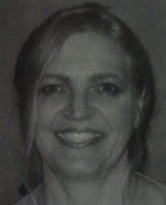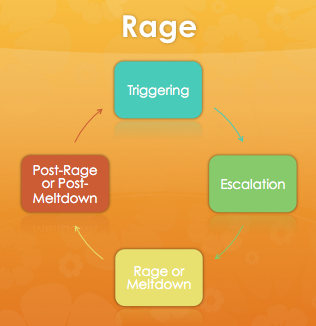paula cook

Paula Cook is an educational theorist who focuses mainly on disciplining students with neurological based behaviors. Furthermore, she teaches at University of Manitoba and received the Council for Exceptional Children's Outstanding Educator of the Year award in 2003. Her model of discipline explains that each student's needs need to be taken into account in regards to behavior management, especially the students that have neurological based behaviors.
Neurological based behavior is erratic behavior that occurs when one's mental processes do not function normally. Students with NBB "...behave as they do because of the way their brains work, and their brains cannot always control their behavior in ways that serve them best" (229). Additionally, Paula Cook connects her theories to Attention Deficit Hyperactivity Disorder, Learning Disabilities, Autism Spectrum Disorder, and Bipolar Disorder. Her research indicates that NBB has three indicators: (1) behavior difficulties, (2) language difficulties, and (3) academic difficulties. Behavior difficulties are atypical, inconsistent, and compulsive behaviors exhibited by the student because of their disability. Language difficulties present problems in the understanding, processing, and expression of verbal information. Academic difficulties relate to fine and gross motor skills, comprehension, language, and mathematics calculation and/or reasoning. Paula Cook further described her research in accordance with specific learning disabilities. Her findings and suggestions for each disability are listed and explained below. Teachers may assist students with specific disabilities with the following suggestions stemming from Paula Cook's educational research:
Learning Disabilities
ADHD
Sensory Integration Dysfunction
Bipolar Disorder
Oppositional Defiant Disorder
Autism Spectrum Disorder
Neurological based behavior is erratic behavior that occurs when one's mental processes do not function normally. Students with NBB "...behave as they do because of the way their brains work, and their brains cannot always control their behavior in ways that serve them best" (229). Additionally, Paula Cook connects her theories to Attention Deficit Hyperactivity Disorder, Learning Disabilities, Autism Spectrum Disorder, and Bipolar Disorder. Her research indicates that NBB has three indicators: (1) behavior difficulties, (2) language difficulties, and (3) academic difficulties. Behavior difficulties are atypical, inconsistent, and compulsive behaviors exhibited by the student because of their disability. Language difficulties present problems in the understanding, processing, and expression of verbal information. Academic difficulties relate to fine and gross motor skills, comprehension, language, and mathematics calculation and/or reasoning. Paula Cook further described her research in accordance with specific learning disabilities. Her findings and suggestions for each disability are listed and explained below. Teachers may assist students with specific disabilities with the following suggestions stemming from Paula Cook's educational research:
Learning Disabilities
- Slow down work pace
- Give both visual and verbal directions
- Assist with organizational skills
- Provide notes to students during lectures
ADHD
- Manage a highly structured classroom
- Limit distractions
- Color code materials
- Give advanced warning of when transitions are about to take place
Sensory Integration Dysfunction
- Keep the classroom neat
- Remove loud and unpredictable noise
- Give directions slowly
- Students with this disability have abnormalities in organizing, interpreting, and responding to information taken in through the senses. Their impaired processing of information may turn to inappropriate behavior and poor learning. Some students seem to be easily overwhelmed by excess stimulation through their sensory processors.
Bipolar Disorder
- Proper medication can stabilize mood swings, and cognitive therapy with counseling can help
- Be aware of what mood your student is in and try not to aggravate it
- These students are also frequently diagnosed with sensory integration disorder
Oppositional Defiant Disorder
- Positive reinforcement
- Reduce number of words when speaking with students
- Symptoms include excessive arguing with adults, deliberate attempts to annoy people, and frequent temper tantrums.
Autism Spectrum Disorder
- Modify the physical environment
- Students will insist on a routine
- Sensory overload can lead to behavior problems
paula cook's rage cycle

There are four phases in the rage cycle. The following lists describes each individual phase, its description, and suggestions for the teacher to properly deal with the student in a healthy way.
Triggering
Description: Events that set in motion episodes of rage that heighten the self-protective responses of students.
Suggestions:
Escalation
Description: Mild escalations are where students may begin to get angry or exhibit verbal or physical responses. Also, rapid escalations exhibit violent tempers, aggressive comments, and students may act out by throwing objects or furniture.
Suggestions:
Rage or Meltdown
Description: The student is fully caught up in his or her rage.
Suggestions:
Post-Rage or Post-Meltdown
Description: Student may not remember the trigger, which can lead the student confused and embarrassed. He or she may need sleep.
Suggestions:
Triggering
Description: Events that set in motion episodes of rage that heighten the self-protective responses of students.
Suggestions:
- Understand that the rage is not intentional or personal toward you.
- STAY CALM and use a quiet tone of voice.
- Use non-threatening body language.
- Use empathetic verbal support.
Escalation
Description: Mild escalations are where students may begin to get angry or exhibit verbal or physical responses. Also, rapid escalations exhibit violent tempers, aggressive comments, and students may act out by throwing objects or furniture.
Suggestions:
- Ensure the safety of other students.
- If the student threatens you, walk away.
- Direct the student to a safe place.
- Do not address the student’s inappropriate language or behaviors because they are unable to process what you are saying.
Rage or Meltdown
Description: The student is fully caught up in his or her rage.
Suggestions:
- Immediate threat to physical safety.
- Do not question or try to talk the student out of the rage.
- Allow the student space.
- Do not try to make the student understand instructions.
Post-Rage or Post-Meltdown
Description: Student may not remember the trigger, which can lead the student confused and embarrassed. He or she may need sleep.
Suggestions:
- Reassure the student that he or she is all right.
- Help him or her plan what to do the next time a rage occurs.
- When the student is ready, help him or her put language to the event.
- Take note of the triggers that precipitated the rage.
| paula_cook.pptx | |
| File Size: | 678 kb |
| File Type: | pptx |
| paula_cook_rage_handout.pdf | |
| File Size: | 134 kb |
| File Type: | |
| handout_side_1.pdf | |
| File Size: | 1074 kb |
| File Type: | |
